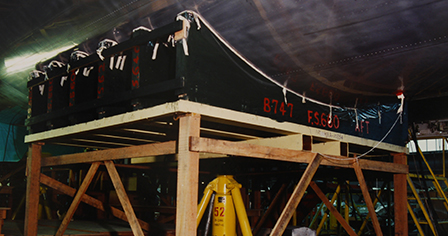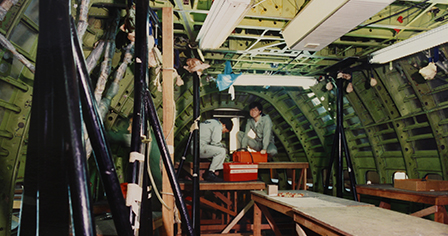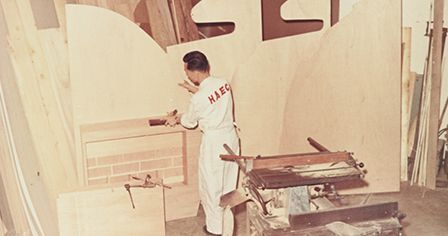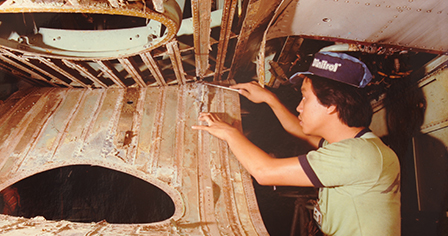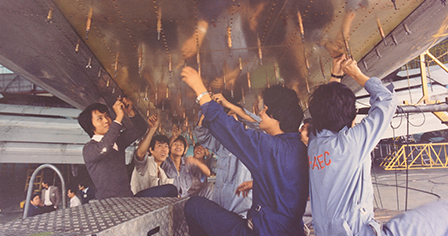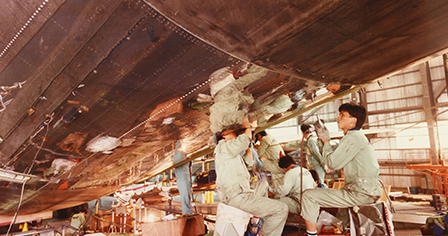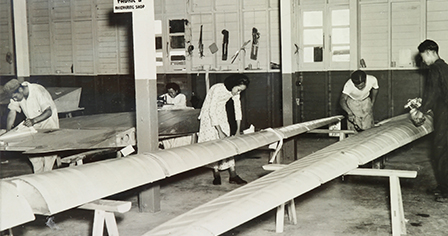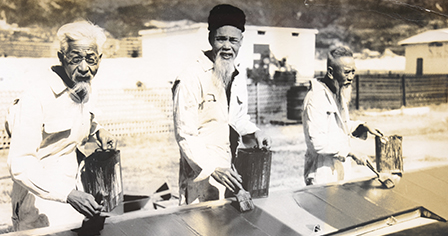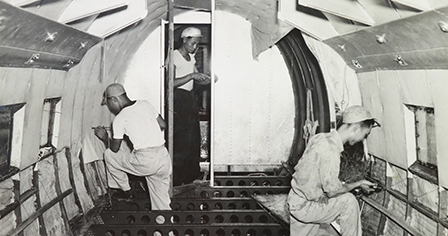
 Stories
Stories
-
14
Why I joined HAECO
-
15
The apprentices
-
16
MET flyer
-
17
CV240
-
18
Mistakes & even more mistakes
-
19
Up in the air
-
20
When boss calls
-
21
Craftsmanship rules
-
22
Package matters
-
23
Seaplanes maintenance
-
24
Reconfiguration
-
25
Fixing the gas tank
-
26
Tempting staff benefits
-
27
New business
-
28
747 inauguration
-
29
New is not enough
-
30
We rock the world
-
31
Lufthansa incident
21


Lai Kam
I was a carpenter, but don’t you think I was dispensable because airplane was made of metal. Without me, no one in HAECO could go about their works…
The role of a carpenter
Because they needed a lift stand in aircraft maintenance. The lift stand had to be tailor-made by carpenters because the plane had a curling and gigantic belly and different planes had different curvatures in the nose and the tail. It was hard work whenever a plane got in, because you had to lift it securely before others could go inside for the overhaul. But it was most hard-pressed for a “skin replacement” because we had to make a stand that could lift up the entire plane from nose to tail. Every inch was a curvature, and we didn’t even have time to piss! Inside the plane, too, we had to do painting and to repair the shelves and cupboards.
The curvature was different in different parts of the aircraft belly. Wooden lift stand had to be tailor-made for each and every part.
Wooden stands of different shapes were made to fit the bottom of different types of aircrafts and the varying curvatures.

Liang Yee Ming
Aircraft maintenance calls for another traditional craft as well…

Kelvin
Sewing?

Liang Yee Ming
Close indeed! The weavers were all-important. There must be a weaving workshop in an aircraft maintenance factory. You’re most likely unaware of it, but the fact is this: in the propeller age most of the apparently metallic wing components were made of fabric, just to reduce weight!
The role of a fabric worker
Old-style airplanes like C-47 were in frequent need of interior fabric replacement. After a year or so we had to peel off the fabric and clothe it anew. The hardest part was to “dress the wing” in the open air outside the hangar. After we clothed it in, we had to apply a layer of oil called “Governor Oil” on it before we sent it to the paint-spraying workshop. But firstly we had to check whether the wing frame was bubbling. If so, we got to return it and let the spraying workshop repaint the base coat. We would proceed to the dressing when it was done. Now, we wrapped the wing completely with a cloth so that we could see nothing but the fabric. We then weaved the opening with a needle, and used a strong tread to do zigzag to prevent bubbling. After that we coated it with 6 layers of “Governor Oil”. We dried the product for a night and then sent to the spraying workshop. There they had to spray two layers of oil, the last layer being silver in color, so that the surface looked like metal plate. The “Governor Oil” was viscous, therefore windproof and waterproof. But we couldn’t work on the dressing if it was raining; there couldn’t be any moisture. So it all depended on the weather. The dressing process spanned about 4 or 5 days. The difficult part was the threading, not the clothing. We had to thread the needle, and then the bodkin; the bodkin went bottom up and the needle went on the edge. We also did the stitch-up first with the needle and then the bodkin. They were all hand-made, and it had to be done by two people. We couldn’t do it alone. One of us clothed the wing and the other stitched it. We did the whole thing together. The two wings and the rudder of C-47 were both dressed, and we did the dressing every year. Austor, the trainer, was wholly in fabric, and most U.S.military planes had fabric wings. But DC-6 was different; only the rudder was fabric, not the wings. When it came to CV-880, no fabric was used at all. After the use of fabric died out, we replaced it with glass fiber.
HAECO staff put on some fake mastaches when painting an aircraft wing.The photo aims at showing how HAECO staff spend their lifetime dedicated to their work.




